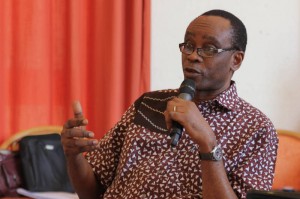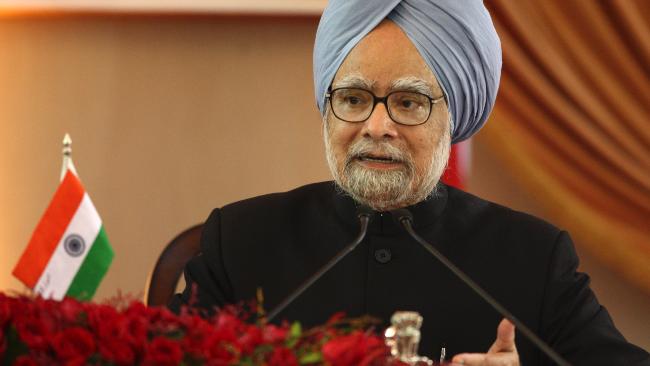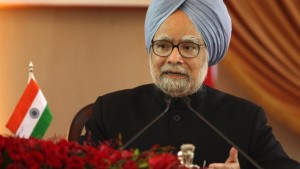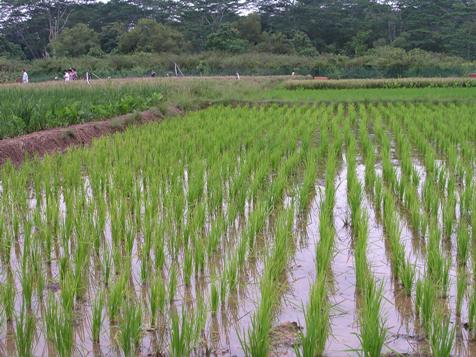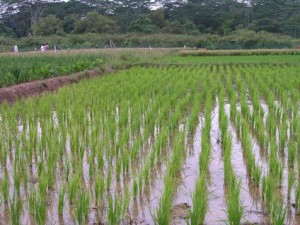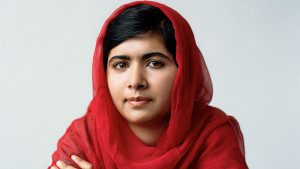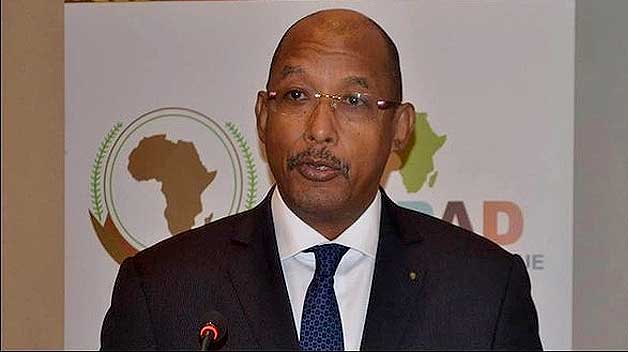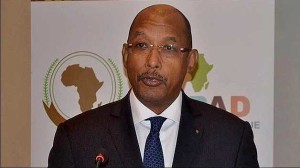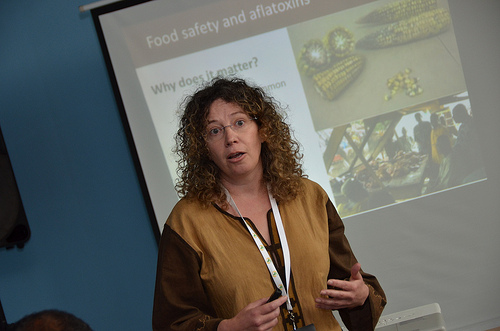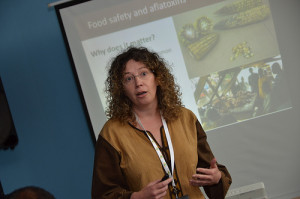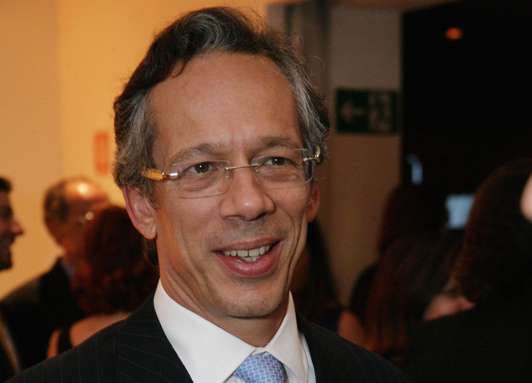Nnimmo Bassey, Director, Health of Mother Earth Foundation (HOMEF), in a recent presentation made in Lome, Togo explores the myriad of environmental challenges militating the African continent’s progress
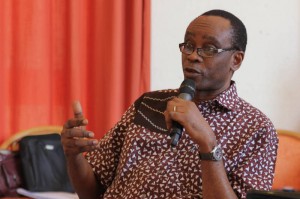
A reading of the theme of this ITUC New Year School, Organising and Mobilising Workers for Africa’s Development, indicates that this is a clarion call for workers to interrogate what we term development and then see how actions development actions impact on the environment. Beyond agreeing on what we call development we should work to determine the path we must take to achieve development as we define it and not notions of development that may not build our desired futures. Workers are indeed central to the progress of Africa and thus it is essential that workers grapple with the issues taken on at this School. Technological advances may reduce the amount of labour required for certain processes, but no matter how advanced, the human factor, the human labour, can only be negated at great peril.
Development is a highly politicised word. Ordinarily it should mean change from one form to another, as in metamorphosis or biological growth or as an improvement. When the term is used these days the tendency is to think about development as a linear process where progress is measured against what obtains in the so-called first world and the worst is seen in the so-called third world, better known as the Global South. This characterisation has built in the catch-up mentality among the nations of Africa. And the attempts to catch up has been consistently roadblocked through international financial instruments like the so-called Structural Adjustment Programmes (SAPs) or more blatantly as we have seen in the case of Lumumba, Cabral, Sankara and other critically conscious post-colonial political leaders in Africa.
The catch-up mentality has led many leaders to see a jumping on the wagon of globalisation as the only way to make progress. Others have accepted that earning of foreign exchange, maintenance of foreign reserves and dependence on the Global North is the only way to ensure the inflow of foreign exchange and related goods that are often of the luxury sort. Thirdly, there has been a rigidly enforced notion and acceptance of neoliberal economic principles designed specifically to scuttle progress in nations that depend on raw materials exports for income.
Samir Amin’s statement on globalisation is good for to look at here: “The neo-colonial plan for Africa is indeed the worst pattern of integration in the global system. It cannot produce anything but the further decline in the capacity of African societies to meet the challenges of modern times… Globalisation does not offer to Africa any solutions to its own problems. Foreign direct private investments in Africa are, as everybody knows, negligible and exclusively concentrated in mineral and other natural resource sectors.”
Obviously there has to be another way of participating in the global system. According to Amin, Western agencies generally see countries that are dependent on foreign aid for survival of their state apparatus as “less developed.” We also note that when aid or certain supports are offered, nations fall over each other to prove that they are poor and highly indebted – if those are the conditions for qualification for a bailout.
In my book, To Cook a Continent, we looked at the pattern of infrastructural development in Africa and saw that the pattern remained one that aids exploitation and concluded that “Over the years the continent was charted for its usefulness, with railways and highways and ports facilitating extraction and packaging for waiting consumers and manufacturing plants in the North. This story remains the same to this day.”
Development and the Environment
Having clarity on the political underpinning of the concept of development is essential to understanding what drives the environmental actions of states and corporations. These are serious environmental implications associated with any development path nations adopt.
Dominant concepts of development have led to the division of the world into developed, developing or underdeveloped world. While a campaign for degrowth is rising in Europe due to the realisation that our planet cannot satisfy the current rate of production and consumption of goods, for us the struggle is for justice and the right to live in dignity. So, if we are talking of development in current terms we may as well be talking about imminent kicking in of post development in some societies and further underdevelopment in others.
If the industrialised nations will be incapable of securing resources to maintain present production and consumption, what is the probability that other regions, including Africa, would be reasonable to pursue a catch-up strategy by following a path that leads to a cul-de-sac. The question being grappled with in other spaces, especially in Latin America is whether we should be figuring out development alternatives or alternatives to development. This is the challenge we should tackle at this school also. Are there concepts and ways of life we have ignored while we accepted competition and exploitation as creeds? What doUbuntu, harambe, buen vivir, Kumak kawsay speak to us?
What yields progress: Improvement of material condition? Or is progress the path illuminated by accumulation of wealth through acting as middlemen such as by the lumpen bourgeois? The wealth and resources of our middlemen or agents of global capital are not linked to the material transformation of society that would lead to the building up of the infrastructure of the nation. Their wealth is mostly a function of one thing: playing the role of the middleman or the commission agent to facilitate national exploitation. One of the key thoughts of Frantz Fanon, for example, was that it is not enough to change our material conditions but that we must utilise our knowledge to build a new narrative for the future that we want.
Foreign direct investments make politicians rejoice while the people and the environment take a beating. Consider the case of the developments at Lamu in Kenya – where a seaport, railway lines, international airport and tourist resorts are a massive intrusion in an area with a rich historical and cultural history. With Lamu as in other areas across the continent, people want to know whose idea are our governments pushing and who would benefit from the execution of those ideas? Are inclusive environmental and socio-economic impact studies carried out before these projects are embarked upon or the studies when carried out at all are mere perfunctory exercises? Are impacted and displaced peoples resettled or adequately compensated?
The Land is not Neutral, Neither is the Seed
Many African communities refer to their citizens as sons or daughters of the soil. In some contexts we proudly declare that that the environment is our life. In fact one person declared that if you want to defeat a people all you need to do is to destroy their environment. This is particularly important to us, Africans, because our lives are bound to the environment, we are indeed sons and daughters of the soil.
Whereas some persons may see the environment as a neutral object to be appropriated, transformed and owned, it is not so for the African. Any disturbance of our soils and waters has impacts on our agriculture, health and socio-cultural wellbeing. The dislocation and alienation of citizens from their natural environment and the disruption of social safety networks create very traumatic situations for our peoples. These environmental impacts can be comparable to violent confrontations that they often directly translate into.
Our agriculture is part of our culture and serves us well. One big challenge to our agriculture is that Africa is a major frontier to the agricultural biotechnology industry. Most African governments and even labour leaders believe that industrial farming is the only way the world can hope to feed itself in the future. Many also believe that Africa cannot be fed by smallholder agriculture. Our governments and experts bemoan the opportunity Africa missed when the Green Revolution train passed her by. No wonder Bill and Melinda Gates Foundation and their collaborators thought of an Alliance for Green Revolution for Africa (AGRA) to bring about a new Green Revolution on the continent. This is arguably an ill-advised catch-up idea. However, a major multidisciplinary study by the International Assessment of Agricultural Knowledge, Science and Technology for Development (IAASTD) showed clearly that future food security actually lies in the hands of smallholder farmers who do not depend on massive chemical inputs. The report, Agriculture at Cross Roads, adopted in 2008, stated that the role of agricultural biotechnology would be very slim indeed, if at all.
Despite rigorous reports by scientists and rejection by farmers and consumers, the biotech industry with very powerful political backing continues to hack away at the resolve of the people to refuse this technology of which there is no proof of safety. In addition, governments pay scant attention to the Precautionary Principleof the Convention on Biological Diversity (CDB) – a principle that urges that caution be exercised when there is doubt about safety of actions that may jeopardise biosafety.
Africa has indeed been in the firing line of the biotech industry. In the early to mid -2000s the track was via food aid. We recall the huge political battles over efforts to introduce GMOs through food aid in Zambia (2002), Angola (2004) and Sudan (2004). These days the approach is through the argument that Africans are malnourished and lack vitamins needed to stem malnutrition, blindness and stunted growth (in children). So there is a new alliance to fight malnutrition in Africa and shameless governments have signed on rather than taking steps to solve the nutrition or even hunger gaps in their countries.
In Nigeria there have been field trials of genetically modifying cassava for enhanced vitamin E levels. Now they are working hard on a species of bananas with capacity to produce vitamin A aimed at Uganda. The industry targets major staple crops on the continent including cowpeas and potatoes. Genetically engineered cotton has been one approach to break through resistance by consumers and to show that GMOs can work with smallholder farmer. This attempt did not work in South Africa and today the poster child is Burkina Faso. We await independent studies to confirm if Burkina Faso is a real success or whether farmers are still enjoying start up packs and subsidies that would be withdrawn in the near future.
GMOs pose several environmental challenges including erosion of biodiversity, dependence on chemical inputs and genetic piracy or colonisation. To make matters worse, they neither yield more than natural varieties nor are they more nutritious. Once introduced into an environment the contamination becomes permanent.
Environmental Costs and Benefits of Development
Environmental costs are those costs that arise from damage done to the environment. They are not covered or find space on our national accounting books. When they appear at all on corporate balance sheets they are shown as corporate social responsibility (CSR) outlays. With CSR, those that cause environmental harm present a façade of care for impacted communities. Environmental costs are tolerated because the environmental benefits are reaped by powerful entities – be they state actors or corporations while those costs are externalised unto voiceless communities.
Market solutions to pollution emerged in the early 1960s by way of monetary compensations for environmental harm. The problems of externalities were solvable “through voluntary negotiations between the polluter and those adversely affected, leading to agreements about fair compensations from the polluter. This kind of transaction supposedly makes all parties better off. Polluters get their profits while those affected by the pollution get compensation that exceeds the value of the damage inflicted on them.” The problem is that you cannot really find the right monetary compensation for ecological damage as some of these are persistent and are irreversible.
This brings to mind the recent agreement by Shell, the oil company, to pay the sum of 55 million Pounds Sterling as compensation for huge oil spills from their pipelines in 1998 and 1999 at Bodo, Ogoniland in Nigeria. It was agreed that a chunk of the cash would go for social infrastructure in the community while the balance would be shared equally among the 15,600 fisherfolk that were directly impacted. The fact that each of those persons whose livelihood had been irreparably damaged would receive about N600,000 or about $3,200 raised some conversations on social media. One person sent a chat to me over twitter urging that fund managers should be approached to help the community folks handle the money – fearing that they may otherwise squander their sudden wealth. That sort of thinking indicates a shallow understanding of the value of local livelihoods. The compensation amount does not by any stretch of the imagination compare to what fisherfolk spend in buying fishing boats and equipment. And the pollution at Bodo, like in many other parts of Ogoniland, is so bad that up to 30 years of work will be needed to effect adequate remediation.
A troubling phenomenon is the trade in toxic wastes. Global trade is indeed so one sided that it would permit the dumping of toxic waste in poorer nations ostensibly to provide them avenue for foreign exchange earning. One particular leaked email by a World Bank claimed that Africa is under-polluted and that it would make economic sense to dump wastes in Africa since the death of men from postrate cancer was a long shot for Africans that would not live to the age of 65 (to worry about the disease) in the first instance.
Nature, Exploitation and Ecocide
The rise of market environmentalism sees nature as commodity and looks for ways to ameliorate environmental and social costs in terms of monetary compensation. Efforts are put into placing a price tag on life and if anything is considered worthless then it is fair game to destroy it. And things only have worth if humans know of what use to put them. The fact that Mother Earth is seen as a slave of man is a clear manifestation of ignorance and unreasonable haughtiness.
It is essential for us all to recognise that everything in Nature has intrinsic or existence value. They all have non-use value. This non-use value does not require that utility be derived from direct use of the resource because the value comes from the resource simply existing. Moreover, life is a web of relationships and everything or life forms are interconnected in this web of life. Trying to determine value simply on the premise of ‘service’ to humanity is absolutely unreasonable. The insistence that Nature most be seen in terms of monetary or exploitation value has been characterised as the reality of colonisation in the 21st century: not just the enslavement of people but of the planet.
A concept developed by HOMEF that can help us deepen this aspect of our conversation is that of Re-Source democracy. According to HOMEF, “Re-source democracy hinges on the recognition that a natural ‘resource’ fundamentally belongs to Nature and secondly to communities of species and peoples who live in the territory or have traditionally held the territory where the ‘resource’ such as forests, rivers or grazing lands exists. Re-source democracy is about stewardship that recognises the right of citizens to establish rules and to act in line with traditional as well as best available knowledge to safeguard the soil, trees, crops, water and wildlife first as gifts of Nature and secondly to enjoy the gifts as necessary provisions that support their lives and livelihoods as well as those of future generations. Re-source democracy calls on us to re-source, to re-connect with Earth – our source of life – and to respect her as a living being with inherent rights, and not just a ‘resource’ to be exploited.”
Climate Crisis and the rise of False Solutions
Africa is arguably the most vulnerable continent to climate change. The visible impacts include floods from unusually heavy rainfalls, droughts and increased desertification. Climate change will usher in new dimensions of water stress on the continent and more citizens will be forced into becoming climate refugees. It portends more conflicts.
Sea level rise is also a threat. Weak infrastructure and cities located on low-lying coastal areas are all vulnerable. It is very important to note that for every global temperature rise, Africa experiences 50 per cent rise higher than the global average. It is also known that to put the planet on a course that would keep global average temperature rise at not more than 2 degrees Celsius above preindustrial levels up to 80 per cent of known fossil fuel reserves must be left in the ground. By the way, when we speak of a global average of 2 degrees Celsius for Africa that means 3 degrees. Food production capacity may reduce by 50 per cent in some cases by 2020 and will be severely compromised in all cases if high temperature rise happens.
Current United Nations Framework Convention on Climate Change Conference (UNFCCC) of parties negotiations have failed to give any hope that temperature increase above pre-industrial levels will remain within acceptable levels. To compound matters, climate negotiations focus on market mechanisms that allow for carbon offsets rather than having measurable, legally binding emissions cuts at source as required by science. What we have had is the promotion of voluntary emissions reduction since the Climate COP15 in Copenhagen in 2009. As we speak, the world is on course to have catastrophic temperature increases if nothing substantial happens at the forthcoming Climate COP21 in Paris in December 2015. One of the requirements to curb temperature rise is to leave at least 80% of known fossil fuels reserves underground. Is this something that countries that have fossil fuel resources would agree to? How about those that are going into extreme extraction such as fracking rather than leaving known conventional reserves untapped?
Whatever is the case, it is clear that there must be an urgent transition from dirty energy as represented mostly by fossil fuel sources. This transition does not necessarily mean job losses but may actually lead to the creation of more jobs that are also cleaner and safer.
The enthronement of false solutions to climate change poses direct sources of environmental challenges in Africa by way of problem shifting from the Global North to the Global South. One example is the investment in production of raw materials for biofuel production that has meant the grabbing of lands on the continent for cultivation of crops including jathropha. Another example is the introduction of the concept of Reducing Emissions from Deforestation and forest Degradation (REDD) and other market solutions that allow polluters to keep polluting once the can pay for a carbon stock in a designated and colonised forest somewhere in Africa or elsewhere. REDD forests often mean violence, human rights abuses, displacement and impoverishment of forest communities, despite all the safeguards introduced. One example is what the Sengwer peoples are suffering in Kenya as we speak.
Energy and Power Grids
As is evident in the Programme for Infrastructure Development in Africa (PIDA) agreed by the African Union in 2012, there is no reference to renewable energy development on the continent. The emphasis is on fossil fuel driven energy supply and national or mega grid lines. It is not surprising that this should be so, because the drivers of the PIDA process are multinational extractive companies, oil companies and international and private financial institutions. Rather than invest on green energy and autonomous supply systems that do not rely on problematic national grids emphasis is made for the construction of coal fired plants, gas plants and probably nuclear plants. Big dams rather than micro ones will probably be on the cards. We must not ignore the fact that Africa has abundant solar, thermal and other resources needed from providing green and renewable energy on the continent. Investment on renewables is certain to generate more jobs than the enclave extractive sector jobs would ever do.
Continent Grab
One response to the food crisis has been a rise in speculations and a massive land grabbing in Africa. According to the World Bank by 2010 fully half of the cropland acquisition projects by foreign interests in the world were on lands in Africa. Beyond the number of acquisitions the quantum of land grabbed was also larger because the unit areas for projects in Africa tended to be higher than those elsewhere. They amounted to about two thirds of all land acquired then. In 2009 DRC promised some 7 million acres of land to ZTE, a Chinese firm, and also gave 1.2 million acres to Atama Plantation, a Malaysian firm, for oil palm plantations. Considering that African lands have been acquired at what has been termed “basement prices” what is happening here amounts to nothing short of a continent grab.
Environmental Corruption and Workers Safety
Weak governance structures and systems engender resource corruption beyond the popular financial corruption. Resources get corrupted when governments run lax environmental regulations and thus permit reckless exploitation of natural resources all in the bid to earn more foreign exchange. Superficial approaches to local content development can also lead to lax laws or non-enforcement of laws. These scenarios have direct implications for the safety of workers involved in the extractive or production sectors.
Lax laws are not given only to corporations such as those in the mining and petroleum sectors; they also pertain to the execution of projects such as highways, airports, seaports, housing developments and other structures donated by foreign governments. Some African governments also prefer foreign donors, like the Chinese, that do not have open conditionalities and do not ask political questions when making offers of assistance in exchange for the natural resources they crave for. By keeping a wilful blind eye such donors can support countries that are notorious for human and environmental rights abuses.
Technological advancements have tried to make more efficient products as well as increasing the rate of recycling and reuse of materials. The problem has been that energy efficiency, for example, does not curtail the rate of consumption of energy as people simply appear to love using more and more rather than less. It has been said also that cheaper gasoline prices may make Americans drive more and worry less about the fuel efficiency level of the automobiles they own. That is a scenario where economy and environmental imperatives clash.
A major trend, however, tends to be in the direction of making disposable products or those with inbuilt obsolescence. What this means is that as products are rapidly superseded by newer models they have to be disposed us. The disposal sites for these products are often found in the Global South were they are sold as cheap items for a people desirous to live the sort of lives advertised on television and glamourized in movies. Thus it can be said that globally, “economic benefits of resource efficiency measures in manufacturing sectors are dissatisfactory as long as the corresponding products end up as hazardous waste in poorer regions.” These products also indicate to us that a whole lot of the mining going on is simply not needed.
The rampant exploitation of the environment goes in tandem with the exploitation of labour. Just as the previously hidden market forces now openly drive the supply of goods, so do the market forces blatantly drive the exploitation of labour. We can even add that in this age of disposable goods, it appears that labour can be disposed of with little thought. Let us say this in other words. The environment and the labour force take a beating in the drive for nature’s resources to be supplied to the highest bidder. Workers get dispensed with because of the teeming pool of the unemployed and because poor workers are not the market for most of the goods they (workers) produce.
Cases where workers have been disposed of with little care include those that were mowed down at Marikina, South Africa and some 13 Zambian workers that were shot dead by their Chinese colleagues. If we add atrocities against informal workers we call to mind the about 52 artisanal miners reportedly buried alive in Bulyanhulu mining area in 1996.
Other acts of wilful and harmful deception against workers include cases where workers are given doses of milk in the supposition that it is an antidote to pollution that fills certain workplaces. Rampant violence against women at workplace speaks volumes on gender inequalities and related exploitation.
The point is that labour, just like the local communities where polluting activities happen, suffers double violence – one from repression and the other from pollution. Workers in the extractive sector, especially those in uranium and other mines, are as exposed to toxic pollutants as communities are. It could even be argued that unsuspecting workers may unwittingly expose themselves to more harm than that suffered by polluted communities. This could happen because of the fact that workers are often closer to these pollutants as they work with or in them. The same is the case with industries where environment health measures are not given prime of place.
It is important that labour unions give attention to the quality of the environment in which their members work or live. Environmental health concerns if adequately taken care of could cut down on the frequency and types of illnesses that are experienced at the workplace.
Environmental Intensity
Extraction of minerals is often resource intensive. It has been reported that vast amounts of water used in fracking, for example, cannot be returned to natural water cycles because it is loaded with a toxic cocktail of chemicals. Such waste waters have to be stored in retention tanks in perpetuity – a clear impossibility. One metal that is crucial for industrialisation is copper. Its extraction is considered to rank among the top 10 environmentally intensive materials. Deposits of the metal have been largely depleted and mostly very poor grades involving large volumes of ore, with huge disposal problems, are being mined these days. Acid mine drainage is a huge problem associated with gold mining and directly affect ground water. Mines are abandoned without proper decommissioning. Mining communities enjoy the least benefits of resources extracted from their territory: Niger Delta (Crude Oil), Kono, Sierra Leone (Diamond), Obuasi, Ghana (Gold), Witbank communities, South Africa (Coal) – to mention a few.
Stuck in the Crude (Niger Delta)
Since crude oil and natural gas are being explored and exploited virtually everywhere on the continent, it would not be out of place to end this short discussion with a focus on that sector. The environmental challenges of petroleum resources exploration and exploitation are wide and well known.

